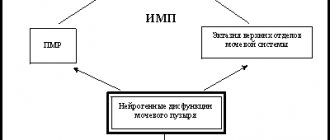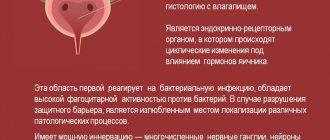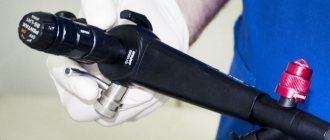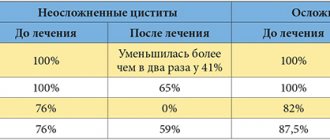general description
Neurogenic bladder dysfunction (NDBD) is a variety of pathological changes in the reservoir and evacuation functions of the bladder, resulting from dysregulation of urination of various origins and different levels of innervation. The frequency of pathology is up to 10%.
The following reasons are known:
- Insufficient function of supraspinal inhibition of the spinal centers for the regulation of urination of desontogenetic origin;
- Myelodysplasia;
- Asynchronous development of regulatory systems for the act of urination;
- Impaired functioning of the autonomic system;
- Disturbances in neuroendocrine regulation;
- Dysregulation of receptor sensitivity;
- Changes in detrusor bioenergetics.
The bladder is normoreflexive when urination occurs at a normal age-specific bladder volume, hyporeflexive when the volume exceeds the age-related norm, and hyperreflexive when the volume is less than the age-related norm.
NDMP is accompanied by secondary chronic cystitis (up to 80%), pyelonephritis (60%), often complicated by bilateral VUR, which can lead to ureterohydronephrosis, reflux nephropathy, arterial hypertension and chronic renal failure.
Causes of the disease
The most common causes in children are:
- uneven rates of development and maturation of urination centers;
- dysfunction of the autonomic nervous system;
- dysfunction of the neuro-endocrine system;
- hypoxic-ischemic lesions of the nervous system;
- cerebral palsy;
- congenital defects of the neural tube (menigocele, etc.);
- pathology of the spinal cord (birth injuries, spina bifida);
- inflammatory and degenerative diseases of the brain and spinal cord.
In adults, the most common causes of neurogenic bladder are:
- Diseases of the central nervous system: stroke, spinal injury.
- Diseases of the peripheral nervous system: damage to small nerve trunks (with diabetes, alcoholism and other diseases), intervertebral hernia, complications after surgery on the pelvic organs.
- Combined damage to the central and peripheral nervous system: Parkinson's disease.
As we see, a neurogenic bladder can be caused by quite severe diseases, when there are structural changes in the nervous system, spine, etc. But most often, in both children and adults, bladder dysfunction occurs without visible pathomorphological changes. This is a functional disorder that occurs against the background and as a result of psycho-emotional experiences and intercenter interactions in the nervous system.
This should be discussed in more detail.
Psycho-emotional experiences and neurogenic bladder dysfunction
Disturbances in the psychoemotional sphere have a direct connection with the occurrence of various diseases, and the neurogenic bladder is no exception. Thanks to the works of neurophysiologists, neuropsychologists, and pathophysiologists, these mechanisms have been revealed.
Briefly it looks like this:
- During a psychotraumatic situation, a focus of increased excitation (anxiety center*) appears in the emotiogenic structures of the brain (in the limbic system). Moreover, the stronger the emotion, the higher the intensity of the focus of excitation.
- The limbic system is anatomically and functionally closely connected with the reticular formation of the brain stem, forming the limbic-reticular complex. This complex forms the closest connections between the subcortical nerve centers - the control structures of organs and systems.
- An intense and (or) long-term focus of excitation in the limbic system (anxiety center*), due to the close location of the subcortical nerve centers among themselves and the above intracomplex neural connections, radiating (spreading), causes secondary disturbances in the subcortical nerve centers. As a result of improper functioning of the nerve centers, disturbances occur in the corresponding organs and systems, manifesting themselves in the form of symptoms of the disease. In the case of neurogenic bladder dysfunction, the functioning of the “bladder center”* is disrupted.
Neurogenic bladder. Intercenter mutual influences in the development of concomitant diseases.
It has been noted that often children with urination disorders may simultaneously experience disturbances in the functioning of other organs and systems: the gastrointestinal tract, pelvic organs, circulatory system, as well as metabolic disorders.
These comorbidities are explained by cross-site interactions. Thus, irradiation from the “alarm center”* can similarly disrupt the functioning of the “gastric*, or “hepato-pancreatic center”*, or the vasomotor center. All disturbances of the centers, as stated above, manifest themselves in the form of symptoms of the corresponding disease.
Symptoms of neurogenic bladder dysfunction
Clinically, the hyperreflex variant is manifested by pollakiuria and an imperative urge to urinate. The hyporeflex variant is characterized by rare urination, weakened or absent urge to urinate, increased volume of urine during urination, and incontinence. The nature of the adaptation of the detrusor to an increasing volume of urine allows us to distinguish between an adapted and non-adapted bladder. Adaptation of the detrusor is considered normal with a slight increase in intravesical pressure during the accumulation phase. An adaptation disorder is considered to be involuntary contraction of the detrusor when filling the bladder, leading to an increase in intravesical pressure above 15 cm of water column. There is another type of NDPM, the symptoms of which appear when the patient takes an upright position, this is the so-called postural bladder. Hyper-reflex (50%), hypo-reflex (5%), postural (25-30%), unadapted (60-70%) NDMP are more common.
Prices for treatment in Moscow
The cost of therapy for neurogenic pathology depends on the clinic and the qualifications of the urologist. Average:
- ultrasound examination will cost 250-400 rubles;
- visit to a neurologist – 500 rubles. and higher;
- initial appointment with a urologist – 200-350 rubles;
- appointment with a general practitioner (therapist) – from 600 rubles;
- cystoscopy – from 3000 rubles;
- encephalography – 600-800 rubles;
- uroflowmetry – 350-500 rub.
Neurogenic pathology of the urinary tract is provoked by disturbances in the transmission of neural impulses from the brain or spinal cord. You can suspect the disease by frequent urge to go to the toilet, urine leakage or retention. The danger of the disease lies in its complications on the kidneys. Timely treatment can completely eliminate the pathology.
Diagnosis of neurogenic bladder dysfunction
For diagnostic purposes, registration of the rhythm of spontaneous urination for 1-2 days, sonography of the bladder, uroflowmetry to detect the volume and speed of urination, cystomanometry during natural filling of the bladder, retrograde cystometry in the vertical and horizontal position of the patient, continuous profilometry of the urethra are carried out. According to indications, electromyography of the pelvic floor muscles and anal sphincter, myelography, CT or MRI of the spine are performed.
How is the disease diagnosed?
To know how to treat bladder atony, you need to diagnose the disease. To begin with, a special medical examination is performed by a urologist. You may also need to visit specialists in a narrow profile. During diagnosis, the following examinations are performed:
- ultrasound examination of the genitourinary organs;
- CT scan;
- taking urethral tests.
Diagnostics are carried out in special medical centers.
Treatment of neurogenic bladder dysfunction
Treatment of a hyperreflexive non-adapted bladder is aimed at increasing the effective volume of the bladder and stopping uninhibited detrusor contractions during the storage phase. For this purpose, anticholinergic drugs are used. For detrusor instability, the most effective is Driptan (Oxybutin), which is prescribed to children over 5 years of age with individual dosage selection. Muscarinic receptor antagonists and prostaglandin inhibitors are used. In order to improve the functional state of the central nervous system, Picamilon 0.02 2-3 times a day and Pantogam are indicated. To enhance the effect of medications, physiotherapy is recommended: heat therapy on the bladder, electrophoresis with anticholinergics and antispasmodics.
Treatment of a hyporeflex bladder consists, first of all, of ensuring regular and effective emptying of the bladder (forced urination at least once every 2-3 hours). Of the medications, M-cholinomimetics are the most effective. With a hyporeflexive bladder, hypoxia and metabolic changes occur in the bladder wall, so treatment includes cytochrome C, hyperbaric oxygenation, coenzyme forms of B vitamins. In parallel, physiotherapy is carried out: SMT, DDT in the rhythm of syncope using a stimulating technique, laser on the bladder area or spinal urination centers, reflexology. If there is no effect from conservative therapy for a long time, and there is a low gradient of vesicourethral pressure, surgical treatment is possible, which consists of restoring the smooth muscle urethral sphincter and creating or strengthening the external sphincter from striated muscles.
Essential drugs
There are contraindications. Specialist consultation is required.
- Oxybutynin hydrochloride (Driptan) is a drug that reduces the tone of the smooth muscles of the urinary tract. Dosage regimen: for adults the drug is prescribed orally 5 mg 2-3 times a day. For children and the elderly, the recommended dose is 5 mg 2 times a day.
- Pantogam (nootropic drug with anticonvulsant effect). Dosage regimen: taken orally 0.025 mg 4 times a day for 2-3 months.
- Distigmine bromide (Ubretide) is a drug that improves neuromuscular transmission and increases bladder tone. Dosage regimen: for oral administration - 5-10 mg 1 time / day; IM - 500 mcg 1 time/day. The duration of use is determined individually.
- Neostigmine methyl sulfate (Prozerin) is a drug that improves neuromuscular transmission and increases bladder tone. Dosage regimen: orally for adults - 10-15 mg 2-3 times a day; s/c - 1-2 mg 1-2 times/day. Orally for children under 10 years of age - 1 mg/day. for 1 year of life; for children over 10 years of age, the maximum dose is 10 mg. The subcutaneous dose is calculated at 50 mcg per 1 year of life, but not more than 375 mcg per injection. Maximum doses: for adults, when taken orally, a single dose is 15 mg, a daily dose is 50 mg; with subcutaneous administration, a single dose is 2 mg, a daily dose is 6 mg.
- Picamilon (nootropic drug, reduces detrusor hypoxia). Dosage regimen: take orally at the rate of 5 mg/kg 2-3 times a day for 1 month.
Tests and diagnostics
In the diagnostic process, the doctor first of all takes into account the patient’s complaints, studies the medical history and gets acquainted with information about clinical symptoms.
Next, an instrumental examination is carried out, including ultrasound, x-ray and urodynamic methods.
A thorough assessment of the medical history is also very important. The doctor asks the patient what kind of urinary complaints he has (urinary incontinence day and night, dysuria , urgency, etc.), whether he has urinary tract infections, nocturia, etc.
To assess urination, some experts suggest keeping a so-called urination diary for two weeks. It records a number of indicators of urination every day: frequency, volume, amount of fluid consumed, dysuric phenomena, defecation disorders.
Most often, the doctor recommends the following examinations to the patient:
- Ultrasound of the kidneys.
- Cystoscopy – to assess the duration and severity of urinary retention and to determine bladder outlet obstruction.
- Cystography - allows you to assess the capacity of the bladder and determine urethral reflux.
- Cystometry - allows you to assess the volume and pressure in the bladder.
- Determination of serum creatinine level.
Incidence (per 100,000 people)
| Men | Women | |||||||||||||
| Age, years | 0-1 | 1-3 | 3-14 | 14-25 | 25-40 | 40-60 | 60 + | 0-1 | 1-3 | 3-14 | 14-25 | 25-40 | 40-60 | 60 + |
| Number of sick people | 0.1 | 0.5 | 1.5 | 6 | 6 | 6 | 7 | 0.1 | 0.5 | 1.5 | 6 | 6 | 6 | 7 |








